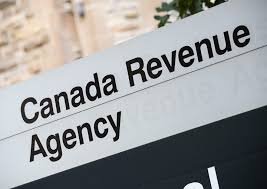In 2025, the Canada Revenue Agency (CRA) has faced notable staff reductions and restructuring.
These layoffs reflect broader federal budget pressures, program sunsetting, and shifts in agency priorities.
Below is a summary of confirmed cuts, projected impacts, and what existing and former CRA employees need to watch.
What layoffs have already occurred at CRA in 2025?
In 2025, the CRA has cut several hundred jobs and eliminated both term and permanent positions:
- In May, the Public Service Alliance of Canada (PSAC) reported that CRA would cut nearly 300 jobs immediately, with 400 more workers facing a retention review process.
- The Union of Taxation Employees stated that more than 3,000 jobs had been eliminated since 2024 across term and permanent roles, including debt collection and call centre staff.
- CRA is also forecasting a reduction in its overall workforce: full-time positions tied to benefits programs are being slashed, and by 2027–28, staff levels are projected to drop to around 47,732 from a current planned level of about 50,804.
What are the reasons behind CRA’s job cuts?
Several structural and financial factors drive the 2025 CRA layoffs:
- Many of the jobs being eliminated were linked to “sunsetting” programs or policies, such as pandemic relief initiatives or temporary measures that are now winding down.
- The federal government has directed public service cost containment, pushing agencies like CRA to reduce staffing and reallocate resources.
- CRA cites budget constraints and the need to “reassess how it works”, including streamlining operations and absorbing functions like digital transformation into other branches.
Which types of roles are most affected?
The layoffs and cuts appear to concentrate on certain categories of CRA staff:
- Call centre and service centre roles are heavily targeted, especially term positions that supported high demand during peak periods.
- Some executive or specialized roles are also affected. Leadership has indicated that internal services and support roles may be consolidated or eliminated.
- Positions tied to benefits program administration are being reduced, given that benefit commitments have declined as some programs sunset.
What are the projected staffing levels for CRA?
CRA has publicly forecast a smaller future workforce:
- For the current fiscal year, CRA planned staffing is around 50,804 full-time roles.
- By 2027–28, the agency expects staffing to fall to 47,732, which suggests a net reduction over time.
- These projections depend on continued program sunsetting and budget constraints.
What is the union reaction and staff response?
Union demands and staff concerns are significant:
- The Union of Taxation Employees and PSAC have called for a moratorium on further job cuts to prevent service degradation and staff burnout.
- Union leadership warns that every position cut increases delays, reduces service quality, and leaves taxpayers waiting longer for responses.
- Some internal proposals include first offering voluntary departures before mandatory layoffs.
How might CRA service and operations be affected?
The staff reductions at CRA could lead to several operational consequences:
- Calls and inquiries may take longer to be answered, especially with fewer service agents.
- Backlogs in processing tax returns, benefit adjustments, and audits could grow.
- Some internal services or support units may be eliminated or merged, which could affect system maintenance, training, and cross-department coordination.
- Digital self-service tools and automation may be pushed harder to compensate for reduced human resources.
Notably, CRA has recently launched a 100-day Service Improvement Plan (from September to December 2025) aiming to bolster service levels, increase staffing in call centres, and expand digital tools.
What should CRA employees, applicants, and the public watch for going forward?
If you’re a CRA employee or applicant, or simply a taxpayer relying on CRA services, here are key items to monitor:
- Official CRA statements or budget documents confirming further workforce changes or freeze periods.
- Union updates or notices from the Union of Taxation Employees about collective bargaining or staffing impacts.
- CRA internal memos on reassignment of roles, consolidation, or restructuring of branches.
- Progress of the 100-day Service Improvement Plan and whether it reduces pressure from unmet demand.
- Job postings and hiring freezes in certain areas, which may signal shifting priorities or selective rebuilding.


